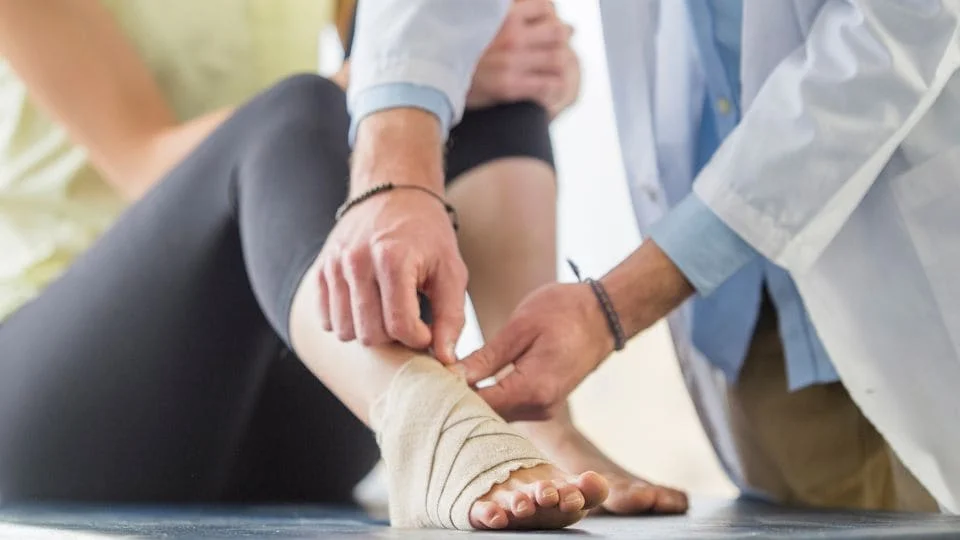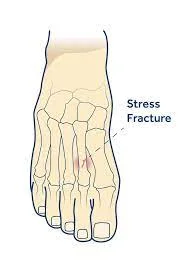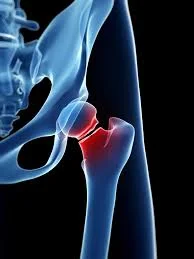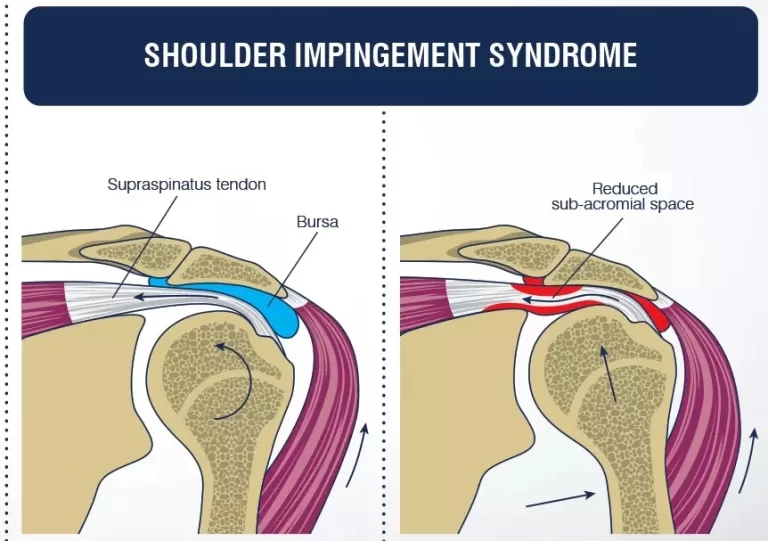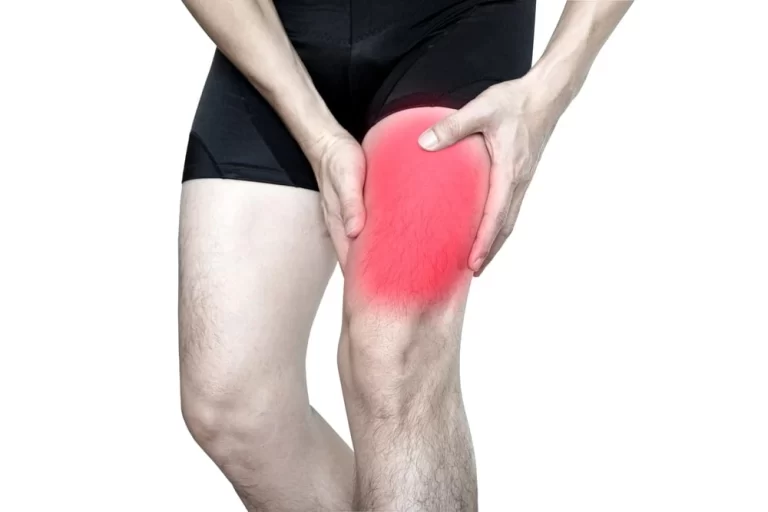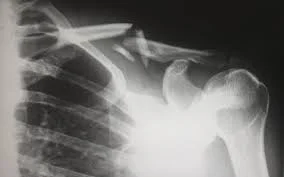Soft tissue injury
Table of Contents
Introduction:
A soft tissue injury occurs when you hurt a soft tissue, such as a muscle, ligament, or tendon. When you have a soft tissue injury, you’ll probably be aware of it because the pain and stiffness might significantly limit your capacity to engage in daily activities and sports.
Sports, workouts, training, and even low-impact hobbies like strolling or gardening can result in these kinds of injuries. Treatments for soft tissue injuries frequently involve manual therapy, stretching, physical therapy exercises, and surgery. But the best course of action is to pay attention to what your body is telling you and avoid becoming hurt in the first place by soft tissue injuries! For example, while it may be tempting to continue exercising despite a hurting tendon, this is an indication that your tendon is irritated and may eventually strain or rip.
For more information, continue reading as we examine the origins and particulars of six different kinds of soft tissue injuries!
What is a soft tissue injury?
Trauma or overuse of the muscles, tendons, or ligaments results in soft tissue injuries (STI). A quick, unplanned, or uncontrollable movement, such as stepping awkwardly off a curb and rolling over your ankle, causes most soft tissue injuries.
However, severe overuse or persistently exhausted structures—particularly muscles and tendons—can also result in soft tissue damage. For example, you could injure or strain important running musculoskeletal structures like your Achilles tendons or calf muscles if you went on a long run when already exhausted from a prior run or activity.
The most common soft tissue injuries are:
- Ankle Spain
- Back Strain
- Calf Strain
- Golfers/Tennis elbow
- Hamstring strain
- Soleus Strain
Many activities can lead to damage to the muscles, ligaments, tendons, and other soft tissues. Pain, bruising, and swelling may follow. Soft-tissue injuries fall into one of the following categories:
- Bruises (contusions)
- Sprains
- Tendonitis
- Bursitis
- Stress injuries
- Strains
For example, while it may be tempting to continue exercising despite a hurting tendon, this is an indication that your tendon is irritated and may eventually strain or rip.
Soft-tissue injuries are very similar in athletes and non-athletes.
Injury to the Anterior Cruciate Ligament (ACL):
The Anterior Cruciate Ligament, also known as the ACL, prevents the anterior tibial translation and internal tibial rotation from moving, allowing the knee joint to be stable in rotation. When playing sports or doing other similar activities, jumping, landing, turning, or changing direction can cause injuries to this ligament.
Illustration of an anterior cruciate rupture
Severe pain, oedema, a reduction in the area’s range of motion, and an unstable feeling are all possible signs of ACL damage. Even though ACL and other soft tissue injuries of the knee frequently require surgery to repair, our team of clinical therapists offers soft tissue injury treatment, collaborating closely with your physician to evaluate your injury and create a post-surgical treatment plan.
Proprioception, which is the capacity to perceive your body’s position and movement, strength, stability, range of motion, agility, and pain management are all important for the best possible healing when there is tear in the knee’s soft tissue or an associated injury.y.
Bruise: Damage to the soft tissue is a bruise. A blunt force, such as a kick, tumble, or strike, is frequently the cause. Because the tissue is bleeding, these injuries induce pain, oedema, and discolouration. R.I.C.E. stands for rest, ice, compression, and elevation in the treatment of bruises. More severe bruising might require a medical professional’s examination.
Though more serious contusions are essentially soft tissue injuries, the term “contusion” refers to the typical bruise. These may affect more than just the skin’s surface and call for physical therapy intervention. A tiny bump at the site of the injury, discomfort, and skin discolouration are possible symptoms.
Hemostomas of the contusion variety can point to more serious damage to a bone, tendon, or ligament. Rest, ice, compression, and elevation will help speed up recovery if the contusion is minor.
Sprain: A sprain is a ligament partial tear. Usually, a twist or wrench is to blame.
One of the most common soft tissue injuries in both athletes and non-athletes, sprains are caused by stretching or tearing of the fibrous ligament tissues. Although sprains typically impact the ankle, they can also affect other parts of the body where two bones meet at the ligamentous junction. While sprains can occur in any joint, they typically affect the ankles, knees, wrists, or spine.
R.I.C.E. stands for rest, ice, compression, and elevation in the treatment of mild sprains. Physical therapy may be beneficial for mild sprains. If the ligament is ripped, surgery can be required.
A range of therapeutic alternatives to help repair finger, wrist, and ankle sprains. Astym is one method utilized at the clinics to help with scar tissue reduction and healthy tissue regeneration.
The ideal course of action isn’t always Rest, Ice, Compression, and Elevation (RICE). Instead, let our professional therapists determine the severity of your sprain and provide you with the finest advice and assistance to repair your soft tissue injury.
Tendonitis: Inflammation of the tendon, which is a band of tissue that joins muscles to bones, is known as tendinitis. Overuse injuries from overloading or repetitive action are frequently the cause of tendinitis. The elbow, hand, wrist, shoulder, hip, knee, ankle, and foot are among the areas that are frequently impacted. Many times, the activity or sport that causes the inflammation—such as jumper’s knee, swimmer’s shoulder, or tennis or golfer’s elbow—is named after the tendonitis.
While tendinitis can strike at any time, most cases of this painful ailment affect those who execute the same repetitive motion regularly. The goal of treating tendinitis is to lessen discomfort and inflammation. Physical therapy methods that target strengthening and stretching of the muscles are successful in treating soft tissue injuries.
The goal of treatment is to heal the inflammatory area by elevating, compressing, resting, and anti-inflammatory medicine. Ice can be used as soon as the wound occurs. Your physician might recommend strengthening and stretching activities. These can be added gradually to aid in healing and stop additional damage. In certain cases of tendinitis, steroid injections may be necessary if the chronic discomfort doesn’t go away. Surgery might be required if a tendon is ripped.
Bursitis: Bursitis is inflammation of a bursa, which acts as a cushion between muscles and tendons and can fill with fluid. Similar to tendonitis, bursitis can result from a direct injury to a joint but is also frequently brought on by overuse. The shoulder, elbow, knee, hip, ankle, and foot are frequently affected by bursitis.
One kind of soft tissue injury that frequently affects the bursae—tiny, fluid-filled sacs that cushion the muscles, tendons, and bones around your joints—is bursitis. Overuse and repetitive actions might cause inflammation. Swelling in the affected area and an achy or stiff feeling are common symptoms.
Techniques for reducing pain and swelling as well as therapeutic activities to assist stretch and strengthen the muscles to help prevent future injuries are all part of physical therapy treatment for bursitis.
Anti-inflammatory medications, compression, elevation, and rest are all part of the treatment. After an injury, ice can be used right away to decrease swelling. If swelling and pain don’t go away, injections can be required. If an infection is the cause of the bursitis, your doctor might recommend antibiotics. Rarely is surgery required.
Stress fracture: A little split in a bone is called a stress fracture. It frequently affects the legs, hips, and feet’s weight-bearing bones. The most common causes of them are increased physical activity and misuse. The initial course of treatment consists of resting the fractured area, using ice, elevation, and anti-inflammatory medications. Rest, reducing weight bearing on the injured area, shoe inserts or supports, and, in certain situations, a cast, are all part of the ongoing treatment. Surgery can be required if the bone crack widens and breaks entirely.
Strain: A strain is an injury to a tendon or muscle that is frequently brought on by overuse or applying too much stress. R.I.C.E. stands for rest, ice, compression, and elevation as a means of treating a strain. To aid in recovery and stop more injuries, a medical professional’s recommended stretching and strengthening activities can be incorporated gradually. If a muscle or tendon tears, surgery can be required to heal it.
Concussions: Concussions are classified as soft tissue injuries since they affect the brain’s tissue and may cause harm to brain function. Even though concussions can have a variety of reasons, athletes and participants in contact sports like boxing and football are most likely to sustain this injury.
A medical expert must assess concussions to determine the best course of action for treatment and preventive measures. Our extensive Concussion Rehab program, in which our skilled therapists evaluate the orthopaedic, neurological, and cardiovascular impacts of your concussion, is especially beneficial for those who have had one.
Difference between a strain and a sprain:
Fibrous bands called tendons connect muscles to bones. A “strain” is the term used to describe the damage that overstretching causes to muscles or tendons. The fibrous bands that hold bones together are also called ligaments. An excessively stretched ligament is referred to as a “sprain” in trauma. Both sprains and strains are extremely prevalent and can result from mishaps at work, at home, or during sports.
Level of severity:
Three severity degrees or levels exist:
- Grade 1:Mild strain or sprain
- Very little overstretching. Potentially small, microscopic fibre tearing
- Minor oedema and mild soreness
- Grade 2:Moderate strain or sprain
- Partial fibre tearing
- Moderate soreness, oedema, and discomfort
- Unable to load the wounded area painlessly
- Grade 3 severe strain or sprain
- Total breakdown of the structure
- Considerable pain and oedema
- Unable to use the damaged structure
- Instability in the affected joint
- The function and Strength of the joint are completely affected
Symptoms of soft tissue injuries:
Usually, there is either immediate or delayed pain and swelling (excessive oedema might hinder the healing process) when soft tissue is harmed. Another extremely common side effect of trauma and oedema is stiffness. Moreover, bruises may appear 24 to 48 hours later.
Instability may occur from mild to severe soft tissue injuries involving the muscles, tendons, and ligaments around a joint, particularly in weight-bearing joints such as the ankle, knee, and hip.
An obvious indicator of soft tissue damage is pain. It’s typical to have additional symptoms in addition to pain, like:
- At the site of the damage, a bulge or knot
- Restricted range of motion
- Bloating
- Marks on the skin
- Weakness, spasms, or cramps in the muscles
- Joint instability
Diagnosis:
Classifications
Acute injuries
One kind of acute soft tissue injury is a bruise.
Any kind of injury to the body resulting from an abrupt trauma, like a fall, twist, or blow to the body. A few instances of this kind of injury are contusions, sprains, and strains.
Overuse injuries
When an activity is performed repeatedly without sufficient time for the body to heal between sessions, overuse injuries can result.
Examples include bursitis and tendinitis.
Commonly injured tissues:
With examples of each. Parentheses indicate location in the body
Ligaments
- Anterior cruciate ligament (knee),
- Medial collateral ligament (knee),
- Ulnar collateral ligaments (wrist/hand),
- interspinous ligaments (vertebrae)
Muscles
- Biceps brachii (upper arm),
- Rectus femoris (thigh),
- Transverse abdominis (abdominals)
Tendons
- Patellar tendon (knee),
- Calcaneal/Achilles tendon (foot/lower leg),
- Biceps tendon (shoulder/elbow)
Nerves
- Brachial plexus (shoulder),
- Ulnar nerve (elbow or hand),
- Peroneal nerve (ankle/foot),
- Cranial nerves I-XII (head)
Bones
- Femur (leg),
- Humerus (arm),
- Ribs (torso),
- Metatarsals I-VI (foot),
- Metacarpals I-VI (hand)
Cartilage
- Menisci (knee),
- Intervertebral discs (spine),
- The acetabulum (hip)
What should you not do if you injure your soft tissues?
Within the first 48–72 hours, it’s crucial to stay away from the following:
- Heat: promotes swelling and increased blood flow.
- Alcohol: slows down the healing process and increases oedema and blood flow.
- Massage: It increases blood flow and, if started too soon, can exacerbate swelling and injury.
Recovery time:
One to two weeks are needed for healing from grade 1 soft tissue injuries, while three to four weeks are needed for grade 2 injuries. Soft tissue injuries of grade three require substantially longer healing periods and prompt evaluation and treatment. Moreover, age, general health, and career can all affect how quickly you recover. If you are still determining the nature or extent of your injury, contact an experienced specialist physiotherapist for advice.
Treatment for soft tissue injuries:
Ankle sprains and other soft tissue injuries are mostly treated and recovered from in three stages.
Stage 1: It’s critical to protect the damaged area, obtain an accurate diagnosis, and adhere to the PRICE regimen (see below) for the first 24 to 72 hours. Gentle, pain-free mobility ought to be promoted whenever at all possible.
Stage 2: Decrease oedema and rigidity and initiate the restoration of typical mobility.
Stage 3: Returning to regular activities and regaining normal function.
PRICE Regime for Soft Tissue Injury
- Protect: Try not to use the affected area too much, and refrain from straining it at first since this could exacerbate the damage to the tissue.
- If the trauma is severe, protect the wound from more harm. Put an end to any activities that could make the injury worse. Crutches may be required to remove weight from an injured knee, hip, or ankle. An arm or shoulder may be better protected with a sling.
- Rest: Take it easy and steer clear of strenuous activity (such as walking or elevating your arm). Even with minor injuries, give yourself enough time to heal. Select a substitute.
- Ice: Use a sports ice pack, or frozen peas, or wrap ice cubes in a damp tea towel. When awake, every three to four hours, use the ice pack for 15 to 20 minutes. It is advisable to wrap the ice in a cloth to prevent hypothermia or cold burns from really cold items.
- Compression: Use a strong bandage that doesn’t impede movement or make the pain worse. The entire joint should be covered by the bandage.
- Elevation: To assist in lessening the swelling, raise the affected limb as high as your heart, if at all possible. When the limb is not being used or walked, raise it using cushions or a sling.
Pain management could also be necessary. Your GP, pharmacist, or specialist physiotherapist can advise if you’re unsure of which drug to take.
Treatment with physiotherapy:
A qualified physiotherapist can evaluate your injury and verify the degree of damage as well as the diagnosis. In addition to lowering your chance of future injuries, they will provide you with exercises, hands-on care, and advice to help you heal quickly and effectively. Additionally, a physiotherapist will provide you with advice on alternate workouts to perform while you’re injured as well as a gradual return to typical activities.
You can aid in this process and return to your regular activities by taking a few steps.
Pacing your activity levels:
Generally, the first few days are the worst for pain and limitation of movement. Initially, you should listen to your body and adapt your life to suit it. For instance, you could elevate your arm to ease a sore shoulder or utilize walking assistance to assist you in getting around.
Too much rest can slow your recovery, so start moving and using the affected area as soon as you can.
Every day or every few days, try to do a little bit more.
How to determine whether your level of exercise is appropriate
Every day or every few days, try to do a little bit more.
How to determine whether your level of exercise is appropriate
Walking aids/supports:
During the early phases of an injury, using supports or walking aids like crutches or a walking boot might be beneficial. Unless you’re advised by a healthcare professional to use these aids for a specific period, try and become less reliant on them as time goes on.
Anti-inflammatory medication:
Historically, drugs such as naproxen, diclofenac, and ibuprofen were advised for any soft tissue injury. Current evidence points to their possible limited value.
If you take them too soon after recovering from a soft tissue injury, they might delay the healing process in certain situations.
Your doctor or pharmacist can assist you in determining which medicine is best for you if pain alleviation is your top priority.
Applying ice:
If swelling is a significant issue, using ice is still advised. Never put ice straight on your skin, remember? Use a barrier to prevent burns to your skin, such as a towel.
Depending on the injury site, using ice for a longer period of time may be necessary. But normally, you should wait a few hours between treatments and apply ice for up to 15 minutes at a time.
If any of the following apply, you should cease applying ice to the area and consult a medical professional:
- You observe an increase in skin blistering, discoloration, or redness.
- The swelling continues to worsen
- The area becomes hot and red
- You are not able to put pressure or bear weight on the affected area.
- Ice should not be used as a therapy for swelling if you have any problems with circulation or feeling.
Compression and elevation:
Controlling severe swelling can be effectively achieved by compression and elevation. Make sure the tubigrip, tape, or bandages fit comfortably without being overly tight. The ideal kind of compression for you can be suggested by your pharmacist.
Elevation is another helpful treatment option, particularly if the injured location is situated above the heart. For instance, prop your arm or leg up on cushions to keep it supported.
Following an injury:
As your symptoms settle over the next few days, weeks, and months, gradually introduce movement, strength, and functional activities into your routine.
These things aid in lowering edema, discomfort, and stiffness. More importantly, they provide your body with vital information and stimulation to repair, restore, and renew itself.
Physiotherapy techniques for soft tissue injury treatment:
Myofascial release: All of the body’s structures, including bones, nerves, muscles, tendons, and organs, are covered in and supported by bands of connective tissue called fascia. Myofascia, then, is the fascia that envelops the muscles. After an injury, the fascia may become taut and constricted, which may result in pain or decreased mobility. The physiotherapists perform myofascial release, a technique that involves applying and holding pressure to regions of tight myofascial to stretch the fascia and relieve any associated pain or tension.
Trigger points: These are small, localized areas of tense, irritable muscle brought on by oxygen and nutrition-depriving “knots” in the muscle fibres. They may cause discomfort and tenderness in the surrounding area and appear as a lump or twitch. Physiotherapists identify trigger sites, then use their fingers, thumbs, or elbows to apply deep strokes while maintaining this position. This method seeks to increase the range of motion, reduce muscular spasms, and treat either localized or referred pain.
Massage: Physiotherapists employ massage as a therapeutic intervention to increase blood flow to the body’s soft tissues, reduce pain, and promote relaxation.
Deep transverse friction: Applying deep forces at a right angle to a soft tissue injury site is known as deep transverse friction. The objective is to increase the soft tissue’s strength and functionality by rearranging its fibres in an orderly manner. Deep transverse frictions are a technique used by physiotherapists to attempt and lengthen muscles, enhance circulation, accelerate the healing process, and decrease pain.
Heat therapy: When an injury is at a chronic stage, physiotherapists administer heat to soft tissue. Heat will improve the healing process by increasing blood flow to the area and removing waste products that might be causing you pain. Applying heat can be done with hot towels, hot packs, wraps, and gels.
Cold therapy: Physiotherapists employ cold therapy, also known as cryotherapy, to treat acute and inflammatory injuries. This aids in lowering blood flow and any excessive localized oedema. Additionally, cold therapy can block pain-related neural pathways. Compression wraps, ice packs, cold sprays, wraps, and gels are all used to apply cold, which further minimizes oedema.
Electrotherapy: Physiotherapists employ electrotherapy to speed up the healing process of soft tissue. Interferential stimulation, ultrasound, TENS (Transcutaneous Electrical Nerve Stimulation), NMES (Neuromuscular Electrical Stimulation), and PSWD (Pulsed Short-Wave Diathermy) are a few examples of electrotherapy types.
Stretching: If you have short, tight muscles, the physiotherapists may incorporate stretching exercises into your treatment plan. Stretching means holding a position that is beyond one’s normal range of motion to lengthen the muscle. Static stretches include holding a single position for thirty seconds, whereas dynamic stretches require active movement.
The trapezius muscles can be softly massaged to reduce stiffness and soreness.
Tissue mobilization: Physiotherapists can enhance mobility and range of motion by mobilizing specific soft tissue areas. This is frequently done for scars left behind from surgery or trauma, and soft tissue mobilizations can be used to stretch and loosen up the scar tissue.
Hold relax/muscle energy techniques: These entail fully contracting a muscle, which in turn causes the muscle to relax as much as possible. Stretching exercises can help to increase the range of motion, loosen up stiff joints, and mobilize them. Either reciprocal inhibition, which maximally contracts the opposing muscle to induce a relaxation of the tight muscle or autogenic inhibition, which contracts the tight muscle to achieve maximum relaxation, accomplishes this.
Exercises:
It would be impossible to include a list of all the exercises for soft tissue injuries in one article due to their wide variety. Here’s an illustration of a post-ankle injury training program. As your ankle strengthens, the program progresses from the easiest exercise to the hardest.
First Exercise Following Ankle Injury (Knee discomfort, balance, and a single-leg row):
- A resistant elastic length should be tied at waist level in front of you and held firmly in one hand.
- Raise one leg (the elastic side) and pull the elastic as close to you as you can by drawing your shoulder blades together and extending your arm back,
- Stay balanced on one leg with the shoulder back and the trunk stable while exercising. Return to the starting position gradually, then do it again.
- Start with one set of four to six repetitions, or fewer, based on how your ankle feels. Increase to three sets of eight reps as you get better.
Regaining Balance After an Ankle Injury (Bosuball Exercise):
- With the afflicted leg elevated on the rounded section of a bosu, stand up (if the ankle is extremely painful, start by balancing on both legs).
- To test your balance, make a half-circle movement with the opposing leg. Throughout the workout, keep your posture straight and balanced.
- Start with three to five 10-second balances and work your way up to three 30-second ones.
Mobility and Early Strengthening Exercise (Knee Soreness, Runner Knee, and Overhead Lunge):
- Step forward, bending your hip and knee to a 90-degree angle with your arms extended above your hips and your knee at hip width.
- Maintain your hip and torso stable, and make sure your foot is in line with your hip and knee. Take control again and go back to the beginning.
- Build up to 3 sets of 6 reps gradually, starting with 1 set of 3–5 reps.
Ankle Strengthening:
- Take a seat in a chair with a physiotherapy band wrapped around your foot and resting on a sturdy object. When your ankle feels ready, gradually increase the resistance from the easy starting point.
- As you move the sole of your foot outside, keep your knee stationary and your heel in contact with the ground. Repeat after making a leisurely return.
- As your ankle permits, gradually increase from 1 set of 4–6 repetitions to 3 sets of 8.
Prevention
Acute soft tissue injuries typically result from slips or accidents that happen unexpectedly. A tragic accident may not always be avoidable. You can, however, reduce your risks by doing things like adhering to safety procedures to avoid accidents at work.
The most common cause of chronic soft tissue injuries is overuse of a muscle or joint without enough rest. To lessen your risk of developing a persistent soft tissue injury, heed this advice:
- Plan on taking breaks between physical activities.
- Perform a range of workouts.
- Before doing any workouts, warm up and then cool down.
- For the best care of acute soft tissue injuries, like bruising and sprains, use the rest, ice, compression, and elevation (RICE) technique. For more severe soft tissue damage, advanced treatment options may involve physical therapy, splinting, and injections.
Summary
The tendons, ligaments, and muscles are all impacted by soft tissue injuries. Usually, an accident of some type, abuse, or persistent exhaustion is the cause. Strains are the result of overstretching tendons or muscles, whereas sprains are the result of overstretching ligaments.
The majority of soft tissue injuries can heal over several weeks, depending on the patient’s overall health and the degree of the sprain or strain.
Good practices, such as warming up, stretching, and cooling down, escalating the intensity and duration of training gradually, and donning the proper protective gear—such as shin pads, gum shields, and appropriate footwear—can help prevent soft tissue injuries. Drinking plenty of water before, during, and after physical activity also helps.
FAQs
Serious soft tissue injuries can leave sufferers with long-term, sometimes disastrous effects. Here are a few signs that you may have had serious injury to your soft tissues: a “pop” or “crack” sound made at the time of the injury. tingling or numbness at or close to the injury site.
Common soft-tissue injuries include contusions, sprains, and strains as well as tendinitis and bursitis. It could take a long time for these injuries to heal, even with the right care.
The good news is that most injuries to soft tissues heal within six weeks. However, it can take several months for the symptoms to fully go away. You might feel some soreness, stiffness, or swelling during this time.
Getting a massage promotes faster healing. Massage aids in the healing of injured tissues by increasing blood flow. By increasing tissue permeability, massage helps injured areas get more blood, oxygen, and nutrients, hastening the healing process.
The RICE treatment involves rest, ice, compression, and elevation to treat injuries. Treating an acute soft tissue injury requires the application of the acronym RICE, which stands for rest, ice, compression, and elevation. Early RICE therapy aims to reduce acute inflammation and initiate the healing process as soon as possible.

